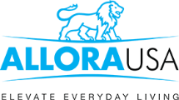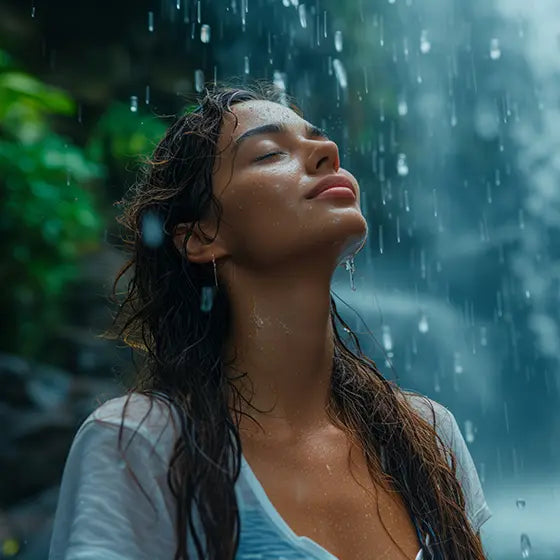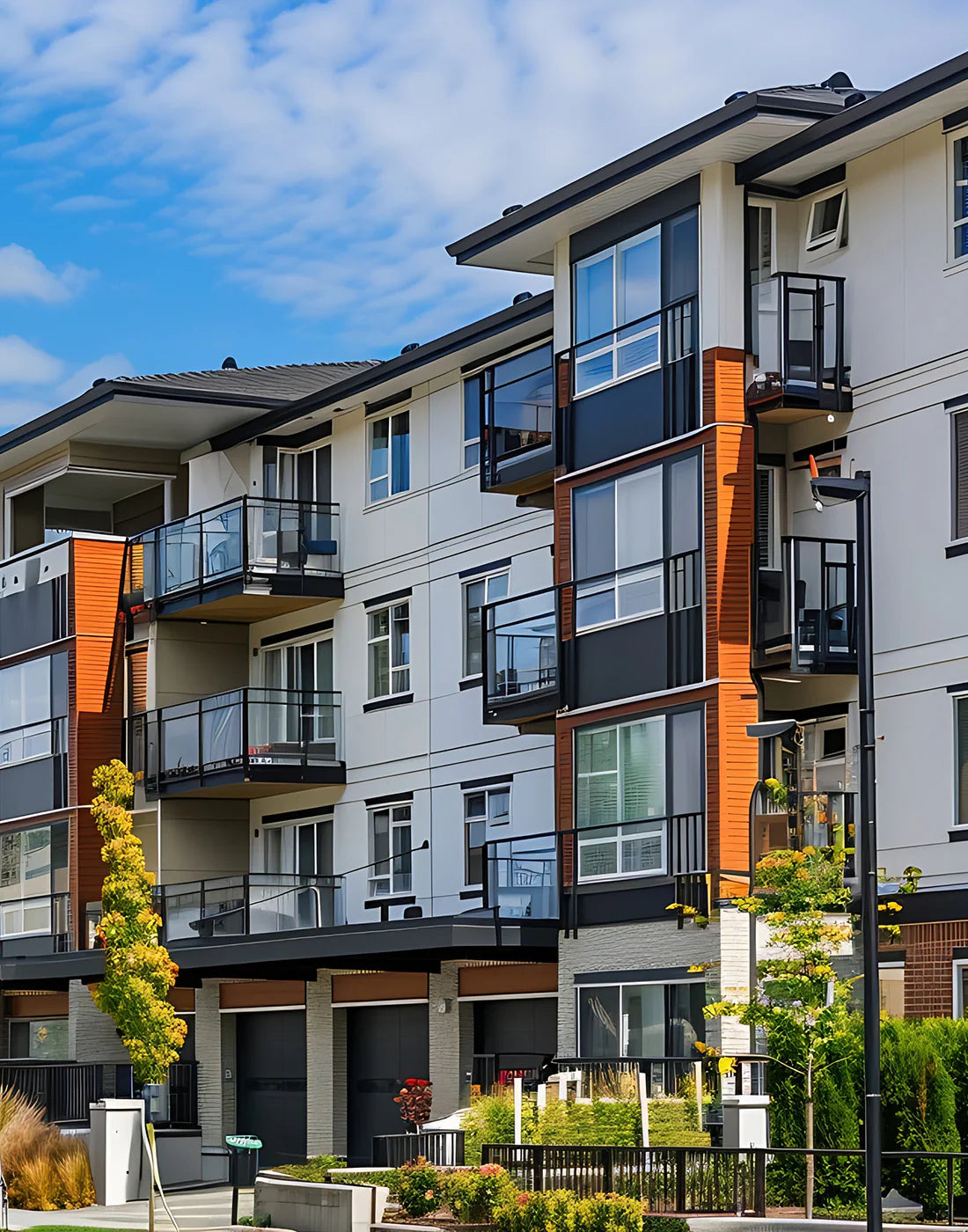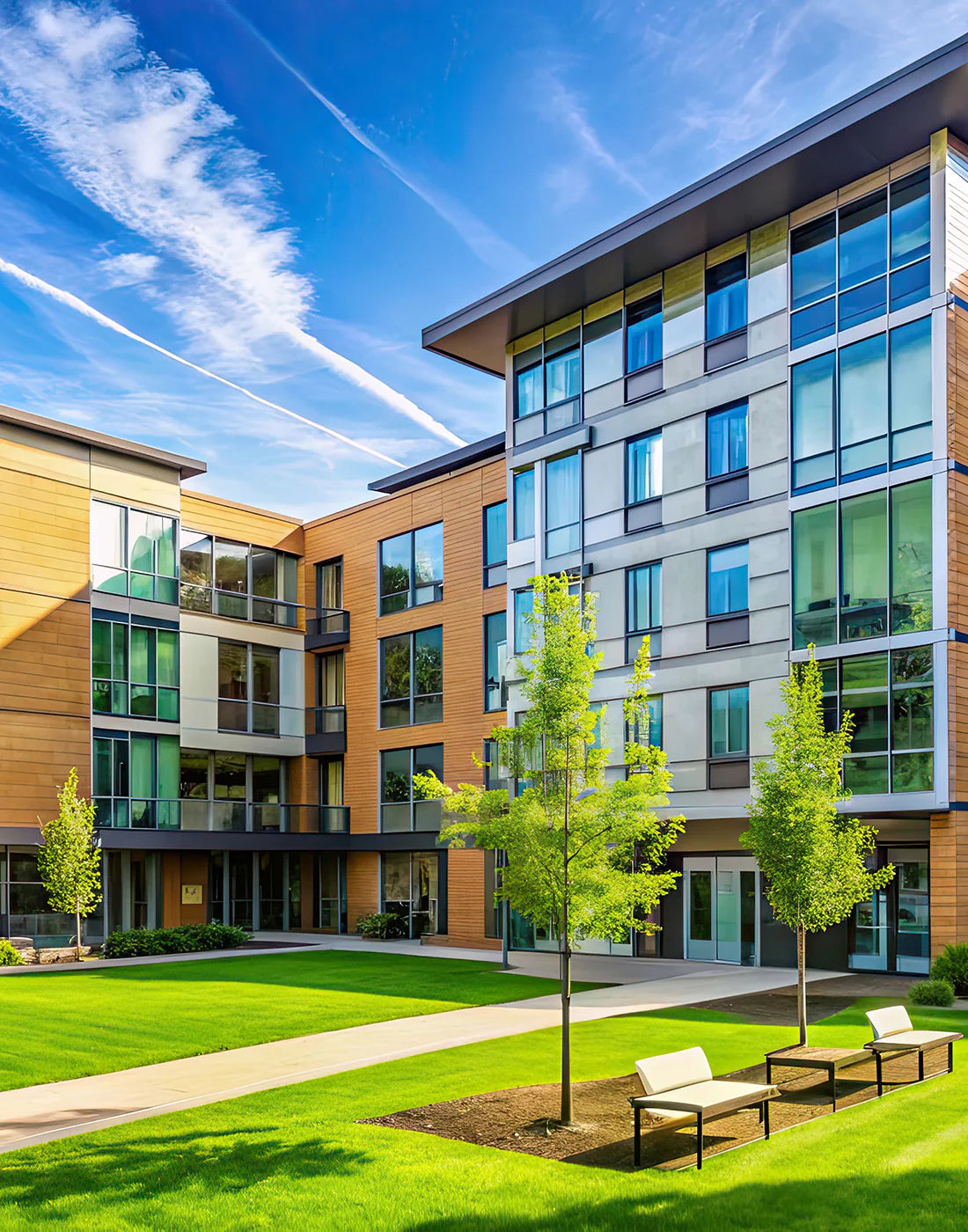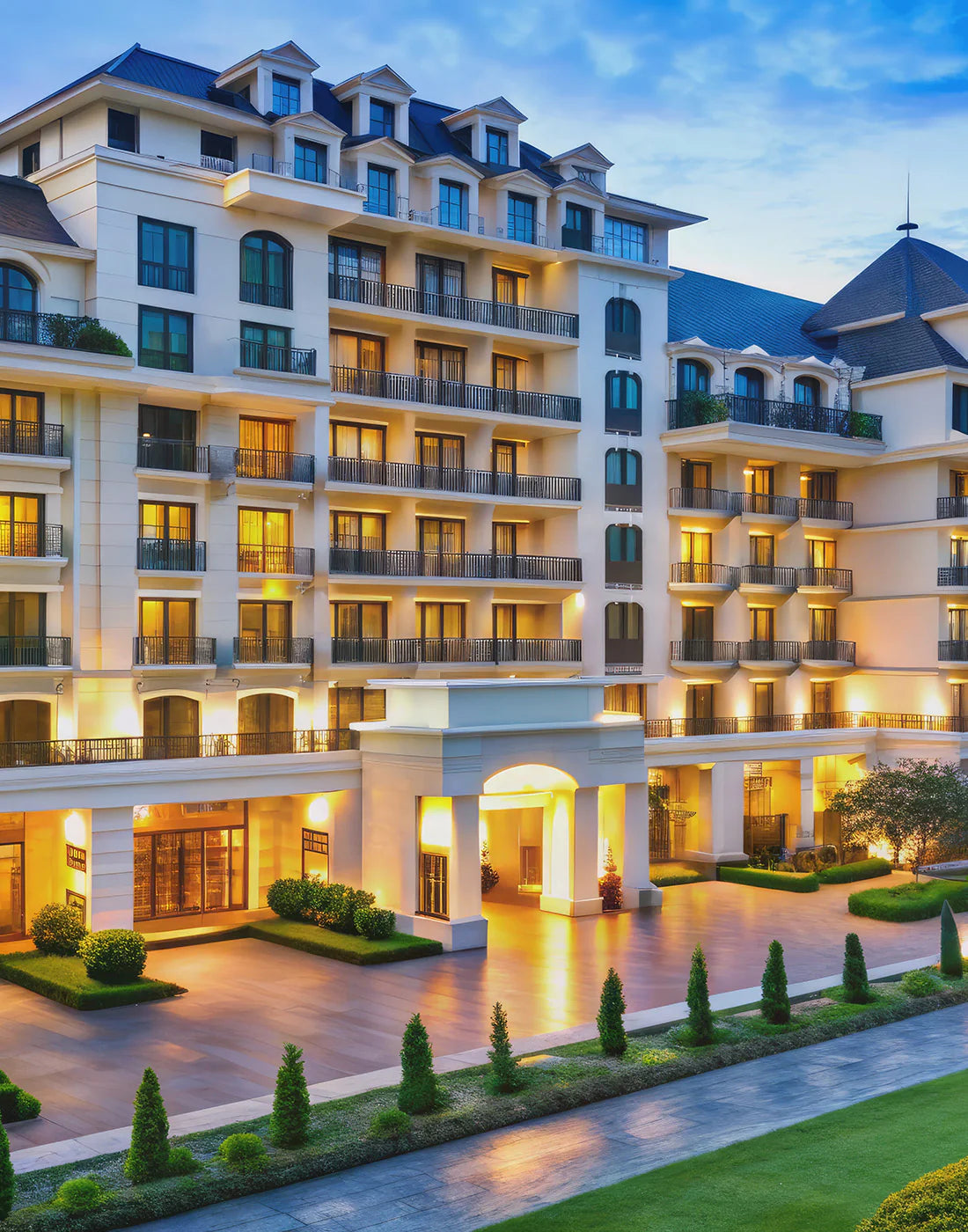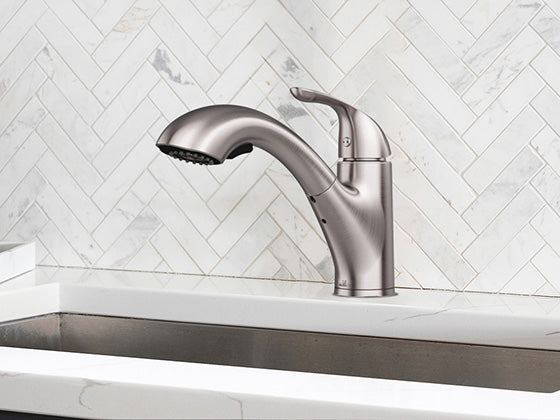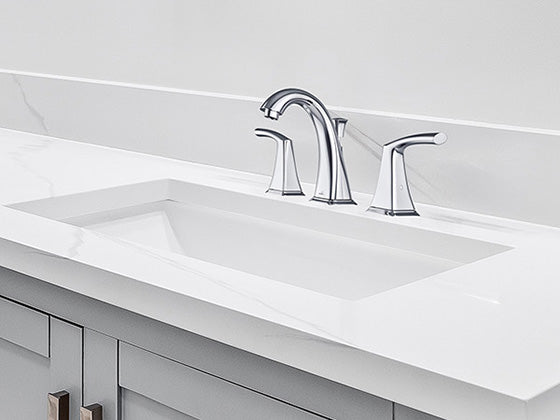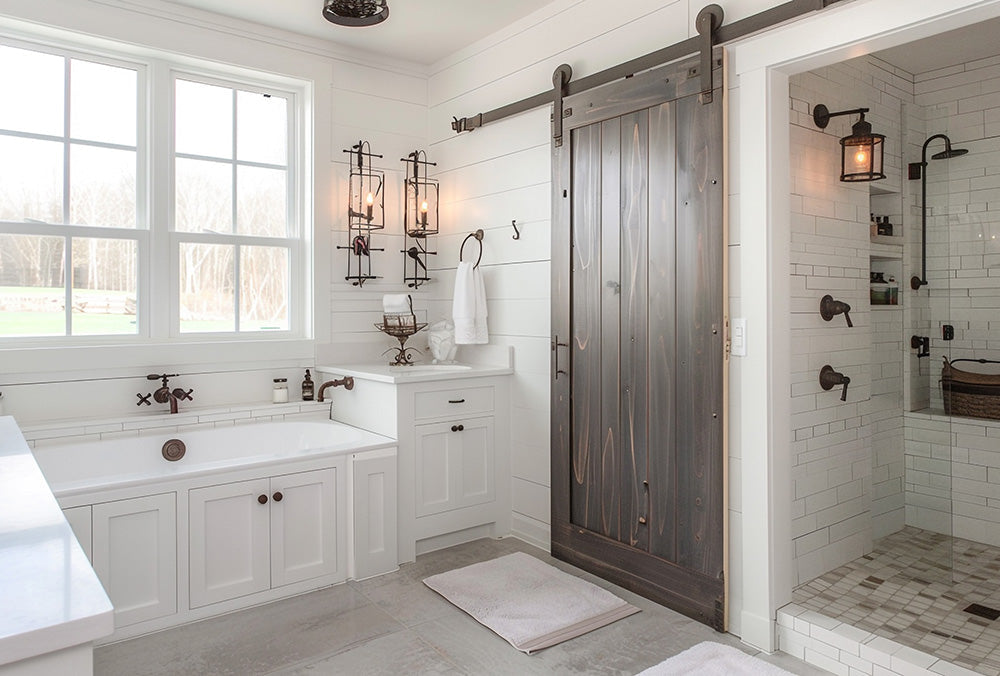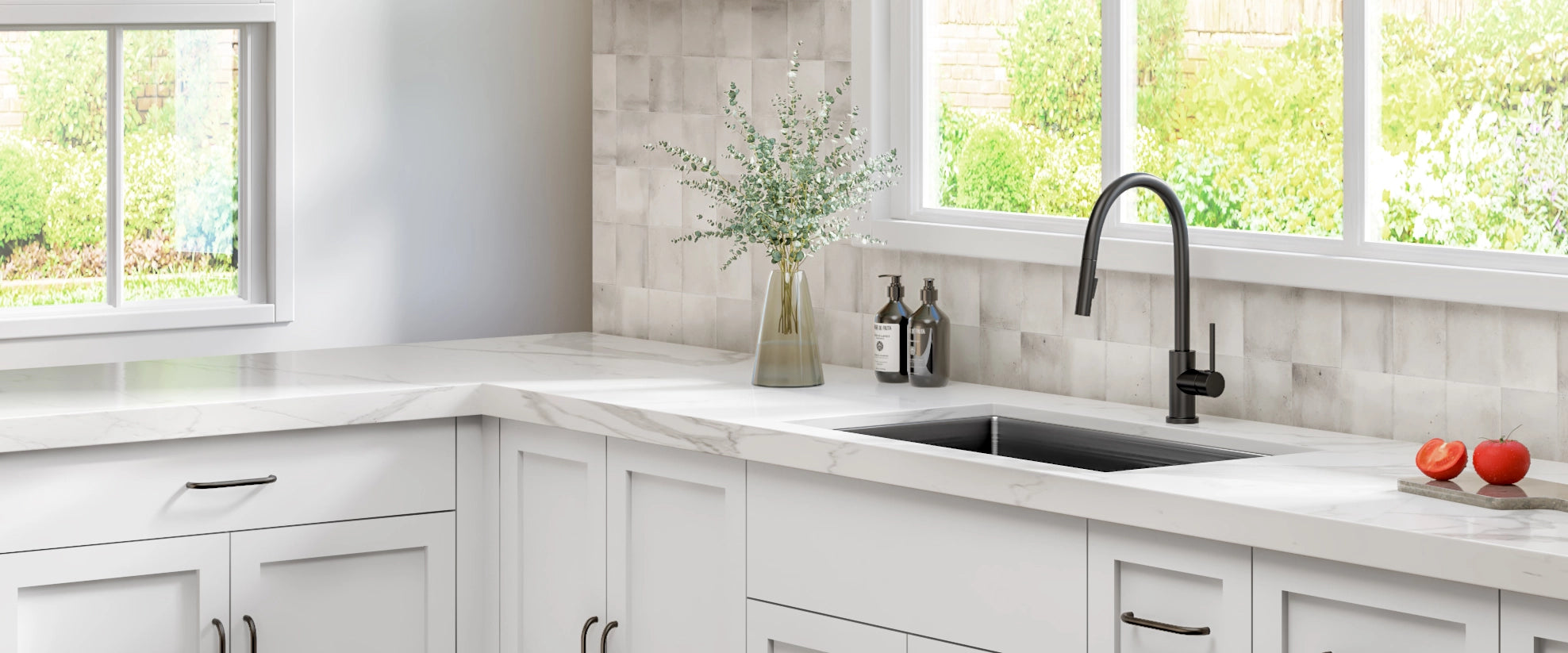Comprehensive Guide to Making Multifamily Buildings Appealing to Eco-Conscious Buyers and Residents
More and more people are trying to switch to green living. They want eco friendliness in every aspect of their life.
LEED certification is a widely recognized way of showing a building is designed and built with sustainability in mind. LEED Certification shines particularly well in water efficiency, especially in multifamily buildings.
Is it really worth the extra effort to jump through the hoops to get LEED Certified? Is it just another trend that’s going to add expense?
Or does getting the LEED certification actually help attract higher paying environmentally-conscious buyers and residents? Can it really reduce water usage enough to lower utility bills and make residents happier?
Let’s explore how water-efficient fixtures can benefit multifamily builders. And why they're a smart choice for the environment and your bottom line.
Chapter 1: Understanding LEED Certification Requirements


LEED Certifications are like an eco-friendly gold star for buildings. They show the building meets high standards for being green, energy-efficient, and water-efficient.
LEED offers various certification systems tailored to different types of buildings. For multifamily residential projects, LEED for Homes is the most relevant and focuses on energy efficiency, water conservation, and indoor environmental quality in single-family and low- to mid-rise multifamily buildings.
To earn a LEED Certification, there are four main areas you need to focus on:
- Location and Transportation
- Sustainable Sites
- Water Efficiency
- Energy and Atmosphere
Each of these areas plays a role in making a build more environmentally friendly and appealing to potential residents and buyers.
1.1 How LEED Credits Work
LEED uses a credit system to determine how green your building is.
You earn points, called credits, for making choices that are good for the environment and for the people who will live in the building.
The more credits you earn, the higher your LEED rating will be—ranging from Certified to Silver, Gold, or even Platinum.
LEED offers credits for performance in eight different categories:
- Location and Transportation
- Sustainable Sites
- Water Efficiency
- Energy and Atmosphere
- Materials and Resources
- Indoor Environmental Quality
- Innovation
- Regional Priority
While all of them are important, this article will focus on water efficiency. Water has a huge impact, both on your certification and for actual long-term sustainability (because it has a compounding effect over time).
Choosing efficient faucets can have a big impact on your project’s LEED score, especially when it comes to kitchens and bathrooms.
1.2 Key LEED Credits for Water Efficiency and Indoor Environmental Quality
Combined, kitchens and bathrooms account for about 60% of a household’s water use. (Source: American Water Works Association) And that’s not even counting leaks.
That’s why the faucets, sinks, and showers you choose can make a big difference in your LEED Certification. LEED rewards projects that reduce water use without sacrificing quality. That means finding fixtures that do the job well while using less water.
For multifamily residential projects, the right faucets can significantly improve your Leed Credits in these areas:
- Indoor Water Use Reduction: This category includes specific targets for water consumption. You can get points in this section with fixtures that cut water use by at least 20% compared to baseline requirements. (More on that later).
- Materials and Resources: This category focuses on what materials are used in a building. Recycled or sustainably sourced materials can contribute to credits in this category by reducing the environmental impact of building materials.
- Regional Priority: In drought-prone areas, LEED sometimes offers extra credits for water-efficient fixtures. Installing low-flow faucets in kitchens and bathrooms helps reduce water consumption, addressing local environmental concerns and boosting your LEED score with a focus on water conservation.
Now you know how LEED certification works. But before we look at earning LEED credits, let’s talk about the other big certification - Water sense.
1.3 Balancing Efficiency with Appeal: Why Choosing the Right Fixtures Can Be Complicated
Environmental friendliness can be complex, as there are many things to consider. The faucets, sinks, and showers you select might seem like small details, but they have a big impact on your project’s LEED Certification.
But LEED Certification is the icing on the cake. If your design doesn’t look good, you’ll have a hard time attracting residents or buyers. So you not only need water-efficient fixtures that won’t leak. You also need faucet designs and shower kits that look great.
Plus, they need to fit in your budget, arrive on time, and not be too complicated to install.
Getting these fixtures right not only helps you earn more LEED credits. It also sets your building apart as a smart, sustainable, stylish choice for high-quality residents.
These choices are crucial for reaching your certification goals and creating a building that’s both green and great to live in. We’ll dig into exactly what to look for in Chapter 3.
First, let’s look at LEED versus Water Efficiency. Where do those two things overlap, and where are they different?
Chapter 2: How Water Sense Compliant Fixtures Fit Into LEED


You’ve likely become familiar with the term “Water Sense" in your search for plumbing fixtures.
Water Sense is a voluntary program created by the U.S. Environmental Protection Agency (EPA). It shows plumbing products are water-efficient without sacrificing performance.
Right now, the program includes indoor plumbing fixtures like toilets, bathroom faucets, and showerheads. While kitchen faucets are not yet included, there are discussions about expanding the program to cover them in the future.
2.1 LEED vs. Water Sense: What’s the Difference?
Water Sense is a label that makes it easier to get LEED credits for water efficiency.
To qualify for the program, a faucet has to be at least 20% more efficient than a standard faucet, meaning they flow at 1.5 gallons per minute or less.
Updates to the program may soon reduce the maximum flow rate for bathroom faucets to 1.2 GPM and add kitchen faucets to the certification at 1.8 GPM. These changes would make it even easier to identify water-efficient products that boost your project’s LEED score.
It’s worth considering that not all water efficient fixtures have the Water Sense label. The program is voluntary, and there are plenty of excellent, water-efficient faucets out there without the label.
Another point to keep in mind is that Water Sense does not have specifications for kitchen faucets yet. (As mentioned above, those changes are likely coming soon.)
2.2 The Benefits of Water Efficient Certifications
Water Sense fixtures offer a lot of benefits, especially in multifamily residential buildings:
- Lower Water Bills: Because Water Sense products use less water, they can help reduce water bills for your residents. Over time, these savings can really add up, making your building more cost-efficient.
- Good Flow in Low-Pressure Areas: Part of the Water Sense program is that the faucet must be designed to maintain a strong flow performance. So they're comfortable to use, even in areas with low water pressure. That means your residents won’t notice a drop in performance, even though they’re using less water.
- Great for Drought-Prone Areas: In places where water is scarce, using Water Sense fixtures is a smart choice. They help conserve water, making them ideal for areas that are prone to drought or have strict water usage regulations.
LEED guidelines can help you make informed decisions about fixtures and materials. It’s a great way to create the type of green living options many residents want. It’s also a great way to reduce each project’s energy and water usage over the long term.
Choosing efficient fixtures is a simple, effective way to help your project achieve LEED Certification.
So, what should you look for in fixtures that can improve your LEED score for water efficiency?
Chapter 3: How to Choose Plumbing Fixtures that will Earn LEED Water Efficiency Credits


Now that you understand what LEED is, why it’s valuable, and how to choose the right WE faucets, let’s bust some myths about LEED certification.If you want to earn more LEED credits, start looking for efficient options in the planning phase of the build. It’s not just about ticking boxes for certification; it’s about finding fixtures that are efficient, stylish, and practical.
It’s best to start with fixtures that…
- Have Water Sense Labels: Use Water Sense-labeled fixtures when possible to ensure water savings and easily earn LEED Water Efficiency credits.
- Offer Consistent Efficiency: Install water-efficient fixtures in all areas to maximize LEED credits and achieve consistent water savings.
- Balance Efficiency with Design Aesthetics: Choose efficient fixtures that also enhance the building’s design to attract quality buyers and residents.
Let’s start by exploring the exact specifications that will boost your LEED score.
3.1 Specifications to Look for in Water-Efficient Fixtures
The efficiency of a faucet is measured in gallons per minute (GPM). Lower GPM fixtures use less water, helping you earn LEED Water Efficiency (WE) credits.
Standard faucets usually have a flow rate of 2.2 GPM. Water Sense faucets reduce this to 1.5 GPM or even lower, without compromising performance.
As mentioned earlier, Water Sense faucets also have a minimum performance rating to ensure the user experience remains high, even as their efficiency improves.
Choosing fixtures with the Water Sense label is a straightforward way to improve your project’s overall LEED score. However, you may find efficient models without the Water Sense label, so be sure to cast a wide net, especially when selecting kitchen faucets.
3.2 Finding Fixtures That Help Your Project Run On Time and Under Budget
Budget is king for any project. So that's probably where your search will start.
It might be tempting to go for the cheapest option. But efficient faucets don't cost much more than standard faucets these days.
Quality fixtures look better and last longer, which improves your project’s value per square foot. LEED credits can add to the value of your project and lead to faster sales. And LEED Certification comes with incentives that help to offset the expense for better fixtures.
Beyond models in the right price range, here are a few things to look for in great fixtures that can improve workflow on your site:
- Single-hole, single-handle faucets. They're easy to install, which can add up to significant savings in labor costs, especially for large projects. They're easy to use, which residents appreciate. And they tend to be less expensive, which is always a plus.
- Products with guarantees and quality manufacturing. Investing in quality fixtures will improve your project’s performance over time, which is good for your reputation.
- Guaranteed stock and fast shipping. This is the best way to avoid supply chain issues that can lead to expensive delays.
The good news is that water efficiency is becoming more of a focus for builders in general. So compliant fixtures should be fairly easy to find from a wide range of suppliers, including Allora USA.
3.3 Fixtures That Will Appeal to Buyers and Residents
All the LEED credits in the world won’t do you much good if water efficient faucets don’t enhance your design and attract the right residents.
Residents love efficient fixtures because (as we mentioned earlier) they help keep their monthly bills down.
But if a resident hasn’t used one before, they might worry about frustration with using these faucets. After all, less water means you won’t get enough pressure, right?
Your sales team might need to consider offering demonstrations to show how water-efficient models perform just as well as standard ones. The easiest way to convince them is to let them test the faucets and see that they perform as well as or better than less efficient models.
You can also sweeten the deal with functional add-ons like pull-out or pull-down sprayers.
A sprayer makes any kitchen faucet more functional, easier to use, and reduces water usage even more.
A sprayer allows you to direct water exactly where it’s needed. So people tend to need less water when they’re washing dishes or cleaning the sink.
Plus, it’s a convenient way to fill large pots to the side of the basin or even clean the sink itself.
How the faucet looks also affects how residents feel about their living space. Fixtures that are both functional and stylish create a space that feels high-end and comfortable. Which can make your property more desirable.
Durable finishes in trending colors are another easy way to make any kitchen or bathroom more attractive. With an updated design and smooth operation, the fixtures you choose can add a stylish boost to any design.
3.4 Putting It All Together: Efficient Faucets In Action
You can see how valuable choosing the right water-efficient fixtures not only helps with LEED credits but enhances the value of your project.
Let’s look at how this works in practice.
Say you’re looking for bathroom faucets for an upscale build in a major metro. Maybe you’re looking to attract young professionals who work in the city.
Allora USA’s model A-7002-BL might be a perfect fit.
It’s a matte black, minimalist faucet with an updated look that’s perfect for a trendy urban home. But what would it do for your LEED credits?
Basic Flow Rate vs. Percentage Water Use Reduction
First, let's look at the LEED WE credit system and how it awards points based on water use reduction.
LEED sets the baseline flow rate based on standard fixtures, which is 2.2 GPM for kitchen and bathroom faucets.
A-7002-BL has a max flow rate of 1.2 GPM. That’s 45% better efficiency than a standard faucet.
LEED awards WE credits for water use reduction based on the percentage reduction across all fixtures in the building. The points are awarded like this:
- 20% reduction: 1 point
- 30% reduction: 2 points
- 40% reduction: 3 points
- 50% reduction: 4 points
- Further reductions can earn additional points.
A 45% reduction across the building would earn 3 points. However, the total water use reduction will depend on the efficiency of other fixtures.
For example, if you choose Allora USA’s A-805-BL kitchen faucet, which operates at 1.8 GPM, (about 18% more efficient than the standard 2.2 GPM), the overall reduction percentage across all fixtures would drop to 31.5%. This would still earn 2 LEED Water Efficiency points based on the credit scale.
To maximize points, balancing the efficiency across all fixtures, including toilets, kitchen faucets, bathroom faucets, showers, as well as water-efficient appliances like dishwashers and washing machines, is key.
Now that you understand what LEED is, why it’s valuable, and how to choose the right WE faucets, let’s bust some myths about LEED certification.
Chapter 4: Myths and Facts About LEED Certification


Let’s debunk some of these common misconceptions and highlight the facts about LEED Certification.
Myth: LEED Certification is Only for New Buildings
Fact: LEED is not just for new construction. LEED for Building Operations and Maintenance (O+M) is a rating system for renovating and improving existing homes.
This system offers LEED Certification by making older buildings more efficient and eco-friendly.
If you manage a property, or are upgrading one, adding water efficient fixtures is an easy upgrade that’s good for residents and potential LEED Certification.
Myth: LEED Certification is Too Expensive
Fact: Yes, it costs money, but you can offset the costs.
LEED Certification can come with significant incentives. Federally, that means tax deductions, tax credits, and accelerated depreciation options. Many states and local jurisdictions provide additional tax incentives for LEED Certified buildings.
Homeowners may also qualify for tax credits and incentives, further offsetting the costs on their end.
LEED also offers flexible certification levels, and LEED Certified or Silver, costs less than Gold or Platinum certification.
So you can choose the level that fits your budget.
Myth: LEED Doesn’t Address Performance Enough
Fact: Somewhat true. LEED has been proven to make buildings more eco-friendly over the long term.
Some critics say LEED is more of a design tool than a performance-measurement tool. That’s because its rating system is based on water and energy modeling and not actual consumption or use in practice.
Some also worry the point system doesn't address problems like extreme weather. Design and material choices shouldn't sacrifice safety for sustainability.
LEED guidelines can help you make informed decisions about the fixtures, materials, and layout of each project. It’s a globally-recognized way to create green buildings. But you’ll need to balance your choices to be sure they’re strong, stable, and have a good lifespan.
Myth: Eco-Friendly Fixtures are Too Expensive to Be Worth It
Fact: Eco-friendly fixtures are often competitively priced compared to traditional fixtures. And the price difference is shrinking every year.
These fixtures offer significant long-term savings on water and energy bills. So they're a smart investment from a resident standpoint.
Plus, making smart choices about efficiency and green practices improves your build’s value per square foot. Not to mention your reputation as a builder. And that’s always good for business.
Myth: Buyers and Residents Don’t Actually Care That Much About Efficient Fixtures
Fact: Efficient fixtures add real value to a home.
For residents, living in a home with efficient fixtures means lower utility bills. This can improve satisfaction and retention, keeping your project profitable over time.
And that means homes with efficient fixtures can have a higher value per square foot and better resale value.
More buyers and renters than ever care about environmental factors in their homes. Meeting certification standards makes a property more appealing and more marketable.
Myth: LEED Certification is a Marketing Gimmick That Doesn’t Make a Big Difference in Real Efficiency
Fact: LEED is a well-recognized name that can indeed enhance property value and marketability. But the certification goes far beyond being a marketing tool. LEED is a globally recognized, rigorous certification with stringent sustainability standards.
Achieving LEED Certification provides measurable environmental, economic, and health benefits. That means the building is not only marketable but also truly efficient and sustainable.
Chapter 5: F.A.Q.


Q: What is LEED Certification, and why is it important for my multifamily building project?
A: LEED (Leadership in Energy and Environmental Design) is a globally recognized green building certification program.
It’s important because it reduces the environmental impact of your project. It also enhances property value, marketability, and resident satisfaction.
LEED-certified buildings are often more energy and water-efficient, leading to long-term cost savings.
Q: How does LEED Certification impact water efficiency in residential buildings?
A: LEED Certification places a strong emphasis on water efficiency. This category awards points for reducing water usage. You can improve in this category with efficient fixtures, such as low-flow faucets, showerheads, and toilets. These fixtures reduce water consumption, helping your project earn valuable LEED credits.
Q: Can I achieve LEED Certification in an existing building, or is it only for new construction?
A: LEED Certification is available for both new and existing buildings. The LEED for Existing Buildings program allows older homes to be certified by making sustainable upgrades, such as improving water and energy efficiency and enhancing indoor environmental quality.
Q: Is it expensive to get LEED Certification?
A: There are upfront costs associated with LEED Certification. These include registration and certification fees. However, the long-term benefits often outweigh these expenses.
LEED-certified homes can qualify for tax credits and incentives, and often have higher resale values. Plus, LEED offers certification levels (Certified, Silver, Gold, and Platinum), so you can choose a level that suits your budget.
Q: What’s the difference between LEED Certification and Water Sense?
A: LEED Certification is a comprehensive building certification. It covers several areas, including water efficiency, energy use, and indoor environmental quality.
Water Sense is a voluntary program by the EPA that certifies water-efficient products. It includes faucets, showerheads, and toilets.
While Water Sense focuses specifically on water savings, LEED takes a broader approach. However, Water Sense-certified fixtures can contribute to earning LEED credits.
Q: Do eco-friendly fixtures really make a difference in water and energy savings?
A: Yes. High quality, water-efficient faucets use significantly less water without sacrificing performance. This not only reduces water bills but also lessens the strain on local water resources.
Over time, the savings from reduced water and energy use can be substantial. So these fixtures are a smart investment for any building project.
Q: Do buyers and residents care about LEED Certification and water-efficient fixtures?
A: Absolutely. More buyers and residents want homes that are both environmentally friendly and cost-efficient.
LEED Certification and water-efficient fixtures add value to a property. They also provide long-term benefits such as lower utility costs and better indoor air quality..
That means more satisfied residents and better resident retention for your project.
Q: Can using water-efficient fixtures really help me earn LEED credits?
A: Yes, selecting water-efficient fixtures is one of the most effective ways to earn LEED Water Efficiency (WE) credits. By choosing fixtures with lower flow rates, you can reduce overall water usage in a building.
That contributes to the percentage reduction required to earn WE credits. In turn, that can help your project achieve LEED Certification.
Chapter 6: Practical Steps to Keep Your Builds Eco-Friendly


Hopefully this guide has helped you understand the ins and outs of LEED Certification and water-efficient fixtures. Now that you understand what it is and how it can benefit a multifamily build, let’s look at how Allora USA can help support your efforts.
All our bathroom faucets and shower sets exceed water efficiency standards, with many surpassing the requirements of the Water Sense program. Even our kitchen faucets are significantly more efficient than the national standard, helping you achieve water savings throughout your project..
In addition to their efficiency, our fixtures are designed with both aesthetics and durability in mind. With Allora’s commitment to high-quality manufacturing standards, you can provide residents with beautiful, long-lasting faucets that enhance their living experience and contribute to your project’s sustainability goals.
We offer guaranteed stock, so you know you can get what you need on time without worrying about supply chain issues. Plus, our warranties and money-back guarantee ensure you’ll get the perfect fit for your design and lasting quality for your clients.
We specialize in professional support for builders, designers, and purchasing managers for multifamily projects. We’ve got options to suit every budget and design.
To make things even easier, we provide standard and ADA options in one convenient place. Buying ADA fixtures from a reputable manufacturer means getting products that meet regulatory and quality standards.
Plus we offer:
- Discounts for commercial projects.
- Guaranteed pricing.
- Product warranties.
- Fast customer support
- Free shipping to most areas in the US.
- Delivery within 5 days or less anywhere in the US.
- Unlimited phone and email support.
Ready to get started?
You can filter through a variety of bathroom faucets, kitchen faucets, bath trim kits, and showerheads. You can even hone your search with specifics like what finish, features, or style you’re looking for. Or look through our catalog for a full list of options and alternatives.
Not sure what you need? Send us your specs and we’ll put together a list of options that will fit your project. We can set you up for ongoing care for all your builds, so you can get great fixtures every time without wasting hours searching for what you need.

